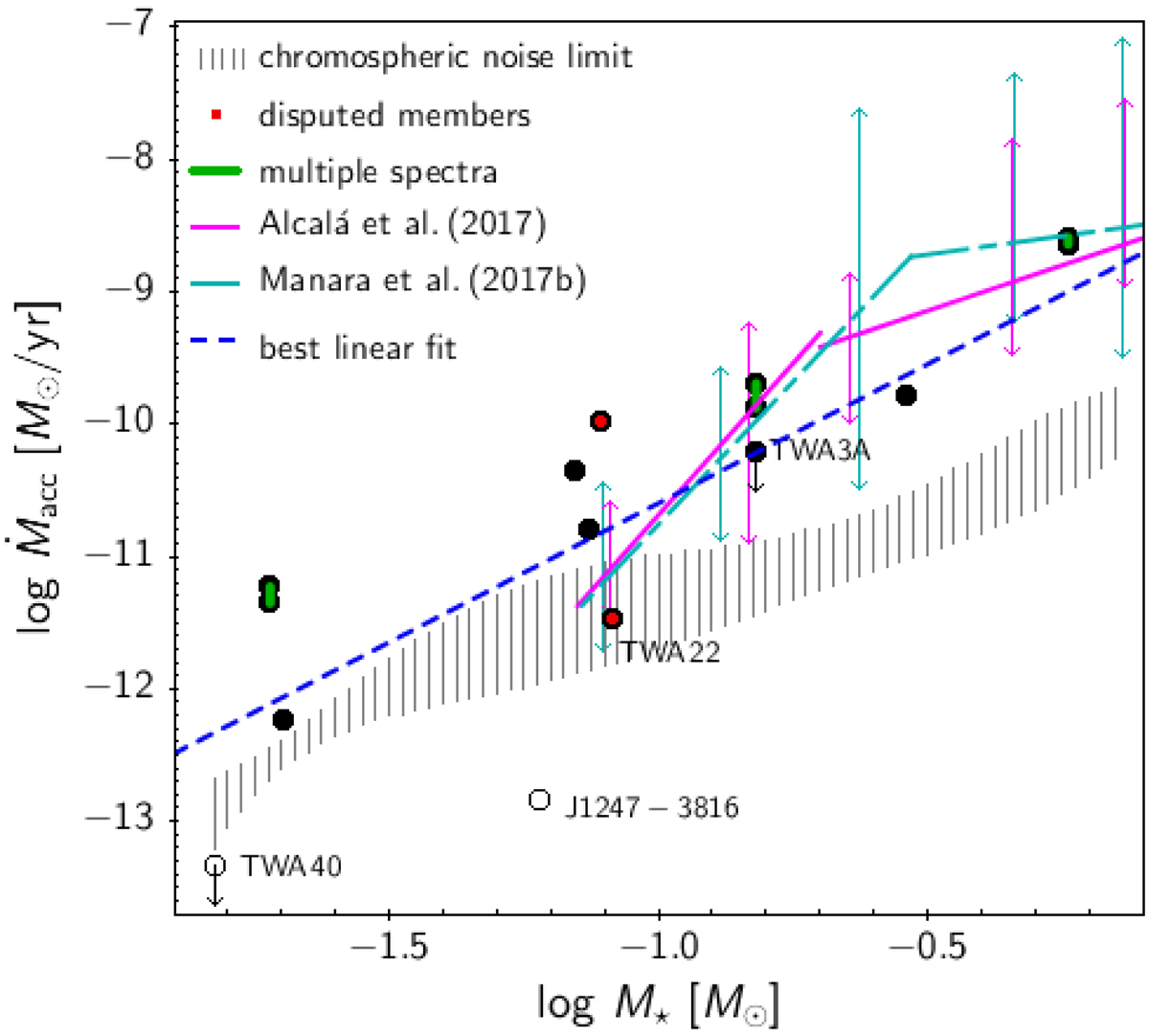Fig. 7.

Ṁacc vs. M⋆ distribution for stars in our sample, where Ṁacc is calculated from the measured continuum excess luminosity for all objects (filled dots) except TWA 40 and J1247−3816 (empty dots). Smaller red dots mark the locations of TWA 31 (upper point) and TWA 22 (lower point). Green vertical lines connect multiple Ṁacc measurements for the same objects. The shaded gray area traces the estimated chromospheric noise limit for Ṁacc detection, as a function of stellar mass, for stars aged between 3 and 10 Myr on Baraffe et al.’s (2015) isochrone grid. The dash-dot cyan line traces the bimodal Ṁacc − M⋆ relationship derived by Manara et al. (2017a) in the Chamaeleon I star-forming region, with a break at M⋆ ∼ 0.29 M⊙. The solid magenta line traces the bimodal relationship derived in Alcalá et al. (2017) in Lupus, assuming a break at M⋆ = 0.2 M⊙. Double arrows mark the 10th–90th percentile range in Ṁacc covered by the Lupus (magenta) and Chamaeleon I (cyan) populations as a function of mass. The dotted blue line traces a linear fit to the datapoints, which accounts for objects dominated by chromospheric emission (labeled on the diagram) as upper limits.
Current usage metrics show cumulative count of Article Views (full-text article views including HTML views, PDF and ePub downloads, according to the available data) and Abstracts Views on Vision4Press platform.
Data correspond to usage on the plateform after 2015. The current usage metrics is available 48-96 hours after online publication and is updated daily on week days.
Initial download of the metrics may take a while.


